1890-99

1891
John Ball Zoological Garden
(Grand Rapids, Michigan, USA) The land John Ball left to the city was being used by the public as a park and was fondly called the “Ball 40”. In 1890 the Common Council declared it would be called John Ball Park. 1891 is the year we begin to see references to animals being kept at “Ball 40”. As recorded in a local newspaper, the small menagerie included bird cages with half a dozen owls of various kinds, two hawks, a crow, and an eagle. There were also raccoons, a woodchuck, fox squirrels and rabbits. Two deer were added later in November of 1891. This was recorded in the minutes of a meeting of the Common Council. Two aldermen volunteered money from their salaries to purchase a pair of deer. The buck and doe, were specifically purchased to provide the beginning of a herd to populate a deer park area on the hillside.

1891
Miller Park Zoo
(Bloomington, Illinois, USA) The first city money was spent for the care of animals in Miller Park in 1891. Although there was at least one deer, there is no definite list of the animals that the first payment supported.
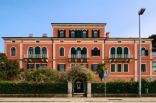
1891
Rovinj Aquarium
(Rovinj, Croatia) The Aquarium was opened as Acquario Berlinese
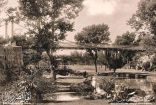
1st March 1891
Zoo de Giza
(Giza, Egypt) The zoo was built by Khedive Ismail and opened on 1 March 1891. It was built on about 50 feddan (21 hectares (52 acres)) that was once part of the harem gardens. Ismail imported many plants from India, Africa, and South America, of which a banyan tree planted about 1871 can still be seen. The original 180 birds and 78 other animals in the zoo's collection were taken from Ismail's private menagerie.
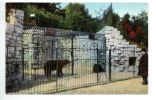
1892
Milwaukee county zoo
(Milwauke, Wisconsin, USA) The West Park Zoo opened in 1892, as a miniature mammal and bird display in a barn at what is now Washington Park.

24th September 1892
Barzelona Zoo
(Barcelona Zoo, Catalonia, Spain) Banker and entrepreneur Lluís Martí-Codolar offered his collection of exotic and native animals to Barcelona City Council. The Mayor of Barcelona at the time, Manuel Porcar, approved the acquisition of the animals and their installation in a publicly-owned site: the Parc de la Ciutadella.

1893
Sri Chamarajendra Zoological Garden
(Mysore Zoo, India) The Palace Zoo was created from the private menagerie of Chamaraja Wadiyar X, the twenty-third Maharaja of Mysore. in 1892, on 10 acres (4.0 ha) of the Summer Palace. Over the next 10 years, the zoo was expanded to 45 acres (18 ha) with spacious enclosures that are still in use.
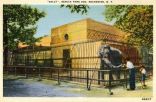
1893
Seneca Park Zoo
(Rochester, New York, USA) Opened In 1893, Seneca Park is one of the Rochester area’s parks that were designed by the landscape architecture firm of Frederick Law Olmsted. The park opened in 1893 and animals were first displayed there a year later. The zoo originally featured different species of deer and some birds, and had an outdoor aviary next to the trout pond in the lower park. During part of the year, some of these animals were displayed in Durand Eastman Park.
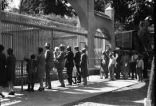
1894
Omaha's Henry Doorly Zoo
(Omaha, Nebraska, USA) Omaha’s Henry Doorly Zoo and Aquarium can track its history back to Riverview Park Zoo, which was founded as part of the park and boulevard system for the city of Omaha. This forward-thinking vision for the city set the stage for one of the world’s best zoos. With the 1895 completion of land purchases for Riverview Park and then the acquisition of its first animals, the foundation for Omaha’s Henry Doorly Zoo and Aquarium was set. From a gathering place for picnics, baseball games, and fishing to a virtual trip around the world, Omaha’s Henry Doorly Zoo and Aquarium is a rich part of Omaha history and a staple of its future.
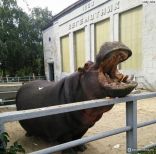
1895
Kharkiv Zoo
(Kharkiv, Ukraine) The Zoos history begins 1892, when an attempt to organize an "aquarium" was launched in the city on the initiative of Professor Oleksandr Brandt . In 1894 , the board of the South Russian Acclimatization Society appealed to the rector of the Kharkiv Imperial University, M. Oleksienko, with a request to lease part of the territory of the University Garden for the organization of the exhibition. In 1895 , the society opened a beekeeping and sericulture station on a plot (about 2.5 ha) of the experimental field of the University Garden. It was housed in a wooden house built according to the project of the architect brothers S. I. and I. I. Zagoskiny(now it is the building of the zoo directorate).

1896
Denver Zoo
(Denver Zoo, Colorado, USA) Denver Zoo was founded in 1896 when an orphaned American black bear cub named Billy Bryan – short for William Jennings Bryan after the contemporary American politician – was given to Thomas S. McMurry (mayor of Denver from 1895–1899) as a gift. McMurry gave the hard-to-manage cub to the keeper of City Park, Alexander J. Graham, who started the zoo with this animal. Other animals at the young zoo included native waterfowl at Duck Lake, native prairie dogs, pronghorn antelope which roamed the park, and a flock of Chinese pheasants, which later populated the eastern plains of the state.
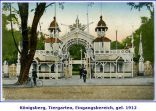
21st May 1896
Kaliningrad Zoo
(Kaliningrad Zoo, Kaliningrad, Russia) From 1895 to 1896, the North-East German Industrial and Craft Exhibition was held in Königsberg. Numerous and very spectacular wooden pavilions for this fair were built on the territory where a zoo has been organized. One of the organizers of the craft exhibition, Hermann Klaass (1841-1914), an apothecary and dental technician, who was also a passionate animal lover and an excellent organizer, was a member of the preparatory committee of this fair. Before the end of the exhibition, Claass made a proposal to preserve the wooden buildings built for her and use them and the park area to create a zoo. The idea was warmly supported by residents, scientists and the city authorities. In August 1895, the "Union of Animal Lovers" – "Tiergarten" – was established. The authoritative initiator who supported Claass in his endeavors and the chairman of the union was Professor M. Braun, who already at that time attached educational and scientific importance to the zoo. The council of the union included prominent citizens, and Hermann Claass became the executive director. The initiative was also supported by the mayor Paul Kunkel. A survey was conducted among the residents of the city about the organization of a zoo in the city, and the townspeople confirmed their agreement by a friendly collection of money. In a short period of time, the necessary funds were collected (400 thousand Reichsmarks was a huge amount at that time!), which were spent on the purchase of the exhibition buildings: the entrance portal, the exhibition hall, the public house and the observation tower. Subsequently, all new structures were designed by Hermann Claass, park technician Model and his assistant Wihul. The animals were supplied to the zoo by the well-known German company Hagenbeck from Hamburg. Two Amur tigers were brought from Moscow. Already at the opening, 893 individuals of 262 species of animals were shown.
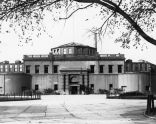
10th December 1896
New York Aquarium
(Brooklyn Aquarium, New York, USA) The New York City government had proposed converting Castle Garden, a former military fort and immigrant-processing station in Battery Park, into an aquarium in 1891. The following February, the New York State Legislature passed a bill allowing the city government to create an aquarium within Castle Garden. Julius F. Munckwitz Jr. drew up preliminary plans for an aquarium, which he presented to New York City's board of park commissioners in mid-1892. The state government voted to allocate $150,000 for the construction of an aquarium within Castle Garden. Local media reported in September 1896 that the aquarium was largely completed. At the time, the tanks contained 45 species, some of which had been in the aquarium for two years. Ultimately, it cost $175,000 to renovate Castle Garden into an aquarium.
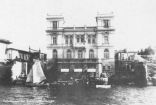
1897
Sevastopol
(Sevastopol, Crimea, Russia) The Sevastopol Marine Aquarium Museum is the very first marine aquarium of the Russian Empire. It was founded in 1897 at the Sevastopol Biological Station, which is not only the oldest Russian biological station, but also the fifth in the world in terms of the time of its creation. The idea of creating the Aquarium belongs to the first director of the Sevastopol Biological Station, Academician A.O. Kovalevsky. He achieved the construction of a special building for a biological station with a marine aquarium on the shore of the Sevastopol Bay, on the site of the former Nikolaev battery. In order to organize the construction at the proper level, A.O. Kovalevsky specially traveled abroad - to France, to Italy, studying the organization of the situation at biological stations in Naples, Villafranca, on the Mediterranean Sea, Arcaron, on the Atlantic coast. At that time, the aquarium had only one hall, where the inhabitants of the Black Sea were demonstrated. The room of the marine aquarium protruded on the northwest side of the building in the form of a quadrangular terrace. Inside the premises there were 7 wall-mounted aquariums (with a total volume of 18 m3) and a central pool of 24 m3. All the pools of the aquarium were filled with Black Sea ichthyofauna.
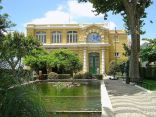
20th May 1898
Aquario Vasco da Gama
(Lisbon, Portugal) The Vasco da Gama Aquarium project was conceived in the context of the celebrations of the "IV centenary of the departure of Vasco da Gama, for the discovery of the Maritime Route to India", with the support of Carlos I of Portugal, pioneer of Oceanography in the country . The land on which it was built was provided by the Ministry of Public Works and Works. It was under the responsibility of the Executive Commission for the Fourth Centenary of the Discovery of the Maritime Route to India and was supervised by scientist Albert Girard . It was inaugurated in the presence of the sovereign. On display were, in addition to the species that he would normally exhibit, the zoological collections gathered during the oceanographic campaigns that the monarch had undertaken aboard the royal yacht "D. Amélia".

14th June 1898
Pittsburgh Zoo
(Pittsburgh, Pennsylvania, USA) The Pittsburgh Zoo opened on June 14, 1898, as Highland Park Zoo, after Christopher Lyman Magee donated $125,000 (about four million dollars when adjusted for inflation) for the construction of a zoological garden in Pittsburgh's Highland Park.

10th October 1899
National Zoological Gardens of South Africa
(Pretoria, South Africa) Opened in 1899 it became the official National Zoological Gardens in 1916.
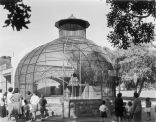
17th October 1898
Perth Zoo
(South Perth, Australia) At the end of the 19th century, the Western Australian Acclimatization Committee was established to help newcomers adjust to the exotic Australian landscape in the burgeoning ‘western colony’. Although their introduction of European species into the Australian wild proved short-sighted, their second function was truly inspired—a zoological garden. The committee enlisted the expertise of Albert Le Souef, Australia’s leading zoological engineer, to select a suitable site in Perth. His son, Ernest, was appointed Director at the age of 27. In June 1897, the first sod was turned in South Perth, marking the beginning of a transformative journey. Over the following 16 months, core infrastructure was built, including accommodations for bears, monkeys, and mammals. The arrival of the first animals by ship, such as orangutans, monkeys, lions, and a tiger, further brought the Zoo to life. Perth Zoo opened its gates on 17 October 1898, welcoming 53,000 visitors in its first nine months of operation. Admission fees remained unchanged until 1951—a modest six pence for adults and three pence for children!

4th January 1899
Zoo Rostock
(Rostock, Mecklenburg-Vorpommern, Germany) The first residents in 1898 are a pair of deer and stags from the Rostock Heath. Wild boars from the Gelbensander Forest. Later that year Forester Schramm sets up a small zoo at the forester's lodge. January 4, 1899 Carl Lange was hired as the first animal keeper in the “Hirschgarten” at the Trotzenburg.
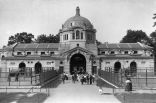
8th November 1899
Bronx Zoo
(Bronx, New York, USA) In 1895, a group made up largely of members of the Boone and Crockett Club founded the New York Zoological Society (later renamed the Wildlife Conservation Society) for the purposes of founding a zoo, promoting the study of zoology, and preserving wildlife. Credit for this belonged chiefly to Club members Madison Grant and C. Grant LaFarge. The zoo (sometimes called the Bronx Zoological Park and the Bronx Zoological Gardens) opened its doors to the public on November 8, 1899, featuring 843 animals in 22 exhibits. Its first director was William Temple Hornaday. Heins & LaFarge designed the original permanent buildings, known as Astor Court, as a series of Beaux-Arts pavilions grouped around the large circular sea lion pool
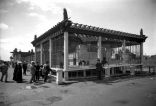
28th December 1899
Woodland Park Zoo
(Seattle Zoo, Washington, USA) Guy Phinney was English by birth and invested $40,000 in his estate to develop a traditional English park on his acreage on the shores of Seattle's Greenlake. He built a large house and laid out a formal rose garden, constructed a pump house to bring water from Greenlake to his gardens, erected an impressive stone entrance on 50th Avenue, and installed an electric trolley line along Fremont Avenue for his private street car. The aristocratic tradition also demanded a deer park and by 1893, when Phinney died, a small herd had been established in the park. Six years after Phinney's death, on December 28, 1899, Phinney's wife sold the 188-acre (76 ha) Woodland Park to the city for $5,000 in cash and the assumption of a $95,000 mortgage. The sum was so large that then-mayor W. D. Wood vetoed the acquisition, only to be later overruled by the city council.The first zoo in Seattle was a small collection of animals owned by the Lake Washington Cable Railway and maintained at Leschi Park. Their animals were given to the City soon after they purchased Woodland Park, and it is interesting to note that Carkeek Park’s first use was as a vegetable garden for the zoo animals. In 1902, the Olmsted Brothers firm of Boston was hired to design the city's parks, including Woodland Park, and the next year the collection of the private Leschi Park menagerie was moved to Phinney Ridge.
woaqzo@yahoo.com